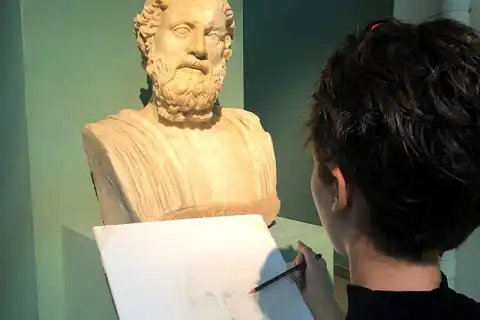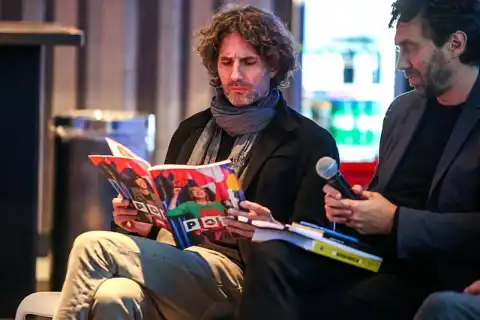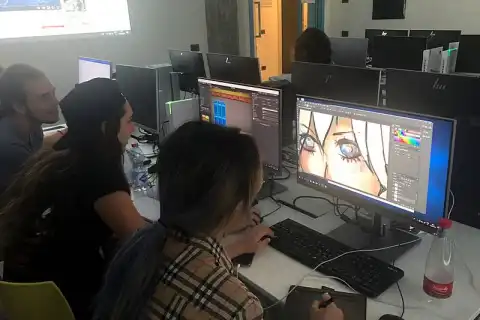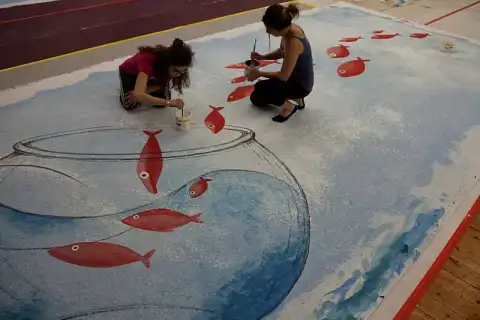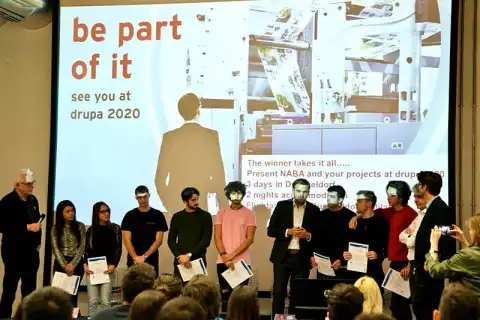Bachelor of Arts - Visual Arts
- 3 years
- Duration
- 21,600 EUR/year
- Price
- Rolling admission
- Start
- Rolling admission
- Deadline
- Bachelor
- Degree
- Campus
- Format
- Multiple Locations / Italy
- Location
Program description
Visual Arts courses recognize that modern art has a wide variety of creative approaches and expressive forms, and then teach the systemic approach needed to generate complex works, ideas, and projects.
Art evolves into a process and way of being, activated by theoretical and practical approaches and serving the artist's unique expression and vision.
Students engage in a dynamic interdisciplinary discussion through theoretical and practical experiences that empower them to function successfully as artists, art critics, curators, and other art system operatives.
Available at Milan and Rome campus.
Program structure
1st YEAR
- Artistic anatomy
- History of modern art
- Painting techniques
- Visual arts 1
- Drawing 1
- Phenomenology of contemporary arts
- Painting 1
- Photography 1
2nd YEAR
- History of contemporary art 1
- Visual arts 2
- Visual arts techniques and technologies
- Public art
- Aesthetics
- Painting 2
- Video-installations 1
- Sculpture 1
3rd YEAR
- History of contemporary art 2
- Visual arts 3
- Painting 3
- Drawing 2
- Photography 2
- Sculpture 2
- Video-installations 2
- Cultural anthropology
Price
Fee for two semester (1 year education) is 21600,00 EUR for international students
Requirements for applicants
HIGHER SECONDARY SCHOOL DIPLOMA
In order to enrol in a Bachelor of Arts programme, you must either have an Italian secondary school diploma (maturità) or an equivalent secondary/high school diploma that is legalized by the Italian embassy located in the country whose educational system the title belongs to. This diploma must be translated and notarized by the Italian embassy or consulate in the country where the diploma was issued, regardless of the school’s actual location.
12 YEARS OF SCHOOL ATTENDANCE
You must have attended school for at least 12 years before earning your secondary school diploma.
ADMISSION TEST
The admissions test is a distance evaluation based on the submission of:
- Artistic statement
- Project Assignment and/or a Portfolio of Projects
LANGUAGE REQUIREMENTS FOR BA PROGRAMMES TAUGHT IN ENGLISH
Students are required to submit evidence of the knowledge of the English language. The language certificate shall be submitted within one month before the beginning of the programM and should not be older than 2 years.
- IELTS - 5.0 Academic/General
- Cambridge English: FIRST (FCE) - 140-159
- Cambridge English: Preliminary (PET) - With Merits or 160
- Cambridge English: Advanced (CAE) - C1
- Cambridge English: Proficiency (CPE) - C2
- Cambridge English: Business Vantage / BEC V - C or 154
- Cambridge English: Business Preliminary / BEC P - Distinction or 160
- TOEFL Computer - 173 - 180
- TOEFL PAPER - 494-510
- TOEFL Internet - 59 - 64
- Trinity College Certificate - Integrated Skills in English (ISE level I – all 4 skills)
- PTE Academic - 36 – 42
- Linguaskill - da 155
- BIEB - Level B1/ Level B2
- ESB ESOL International - B1 - Entry 3 (all modes)
- TEEP - 5
- Bulats - 40 - 59 (all 4 skills should be passed: listening, reading, speaking, writing)
About the university

NABA is a private institution established in Milan in 1980 by Ausonio Zappa, Guido Ballo, and Tito Varisco with the intention of breaking away from conventional educational models and introducing students to fresh perspectives and innovative pedagogical tools grounded in the realities of the modern creative economy. The Italian Ministry of Education and Research officially recognized NABA in 1981.
Since its inception, NABA has worked to shake up the status quo of academia by introducing fresh perspectives and innovative practices. This is a progressive institution of higher learning that actively seeks out and celebrates the variety that characterizes the modern world.
NABA is more than just a school; it is also a community where students' professional and creative selves can take shape. It's also a hub for creative output, where students can try their hands at a wide range of activities, learning the skills they'll need to strike out on their own as designers and find their place in the wider professional landscape.
Areas of education in NABA
- Communication And Graphic Design
- Design
- Fashion Design
- Media Design And New Technologies
- Set Design
- Visual Arts
